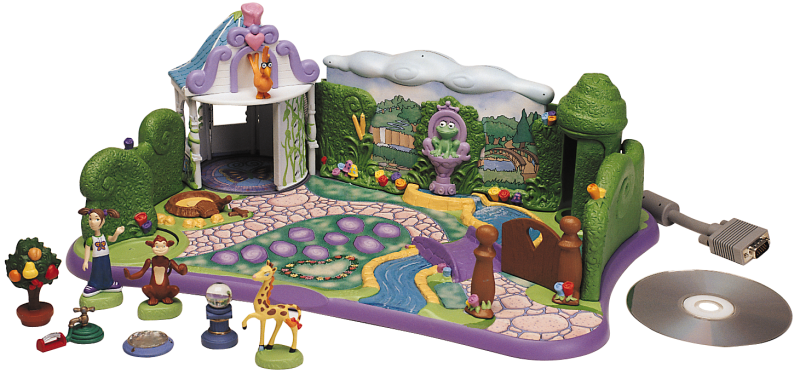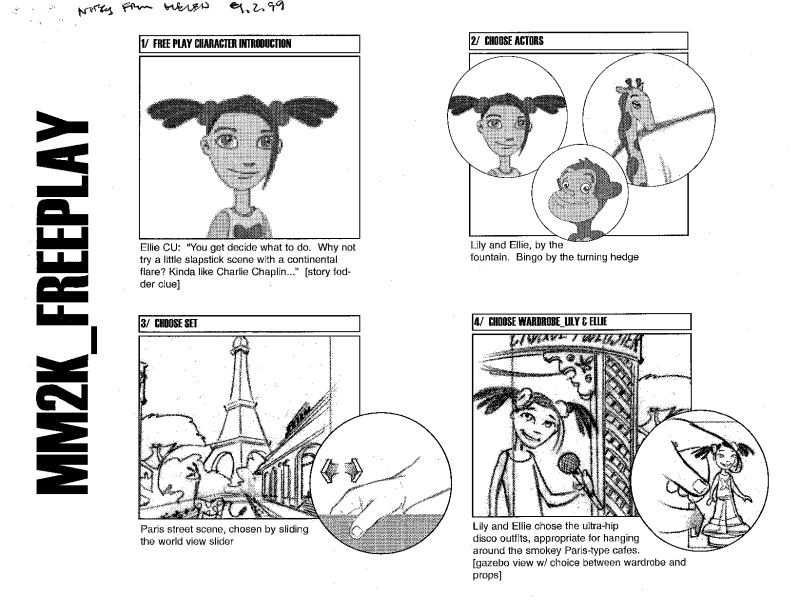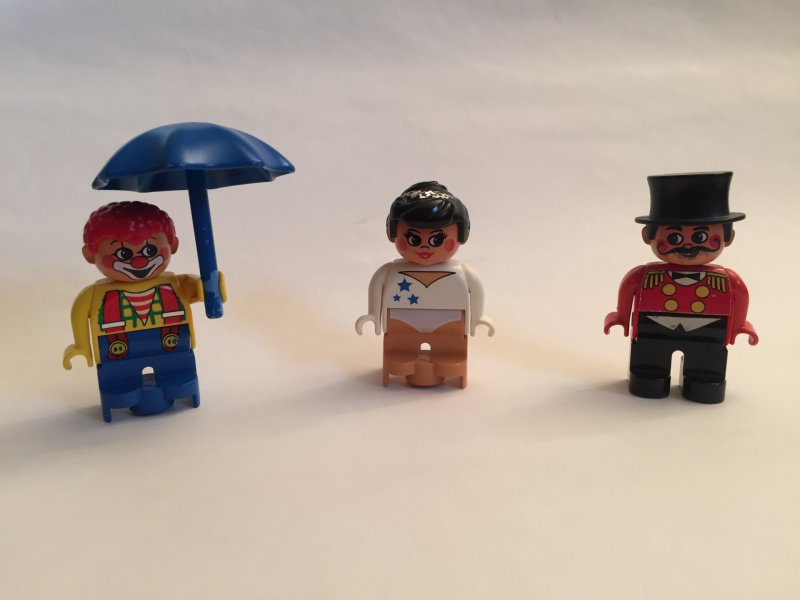For the first question, how did you get involved with Zowie Entertainment?
So I met a guy who worked for IDEO when I was working for a company called Cyclops. Wewere making basically like a peloton, in the late 90s, before peloton was a thing. And he left to join this startup that was a spin off of Interval Research, which was Zowie and I was asking him how to get into doing product design and he said, “come work for me at Zowie," so I moved from New York City to San Francisco to do that.

Before LEGO bought out Zowie Intertainment, there were two previous projects, Redbeard's Pirate Quest, and Ellie's Enchanted Garden. What can you remember about their origins and development?
Yeah, so let me give you a high level and then we can dig into details, as you see fit. So let's see, I joined in like the fall of 1998, I believe, and we were operating under Mirvo toys. So still somewhat in stealth mode. And this object tracking technology based on what's essentially RFID now, but it was just these little radio frequency transmitters had been developed out of Interval Research and Interval had been working on this big convergence project.
They thought that all media and tech was going to converge into the living room. And they were specifically looking for applications in the toy space. So it had to be, you know, relatively cheap technology to put into toys. So we had object tracking, we were working with some guys in the UK, we were doing what I'll call the hard math for determining the position of the objects. There were ways to do orientation as well, and ironing out the details, spitting out a chip, we did our own chipsets as the controllers for the board.
I was working primarily on the software, the video game experience and the physical interface to that video game experience, so the toy itself. It was called Annie's Enchanted Garden at that time as the working title and then there was the pirates quest. There was a third title that was in development and it made it to the concept phase at least. Unfortunately it never panned out. I think the third one was with Muppets, like a Muppets in space idea. We were looking for a property to use. So I think we had talked to Nickelodeon. There was, you know, SpongeBob and Rugrats kicking around. And I don't think the deals worked out with the licenses for that, and three programs, there's just too much for the company to do. So, you know, we were making models, working with prototype hardware building prototypes in Macromedia Director. And demoing this stuff to, you know, toy companies, investors, so on and so forth.
And we finally got the green light to go into production. So that was tooling up in toys, putting the hardware electronics on a production path, and working with a game developer to do it. The titles, and we worked with a company called Human Code out of Austin, Texas at the time. And they did a lot of the production art, and the coding, based on the gameplay that we had developed and the game modules and the interactive experience. It was on the market by fall of that year
What can you remember about the Movie Maker, which was unreleased?
Yeah. So MovieMaker was actually my project. And when we were looking at some before, before Ellie's made it onto the market, we were looking at the follow ons, and we had MovieMaker as an add on pack.
So the idea is that you use the same characters and game objects, but you would add some new ones. And one of them was like a little video camera object. And I think we had a sync slate, we may have added a director and some lights, so that was the idea. You could make little home movies with Ellie and her friend and that also went into development. We were working on that with Mudpuppy studios. They were were out of Portland, Oregon, and we shut that down when we got acquired by LEGO.

Were there any previous discussions about developing a LEGO project before the buyout?
I think… Yeah, I think there were. I think we had talked about potentially just developing a game for them based on their properties, and I wasn't really part of the discussions like the terms of the acquisition discussions, so I'm not sure how it went from that to "Hey LEGO is just gonna buy us."
I think it changed over time, because when we started talking to them, we were trying to self sustain and go into the, you know, basically like development publishing business, right. So we would do whatever game, whatever toy, you want based on our technology and our expertise and developing experiences around that technology.
Then at a certain point in fact, exactly at this point, during Thanksgiving weekend in 1999 we learned that our funding from Vulcan Ventures, which was the investment arm of Interval of Paul Allen, weren't going to provide any additional funding for us. So we're basically trying to self sustain at that point. And we weren't turning over enough toys to be self funded.
And so from there, it went into “Alright, let's look for a buyer.” And we talked to Leap or LeapFrog, I guess, is what they're called related to LeapPad. We even talked to Fingerhut, they had these little play-like pop up tents. Obviously, like the EBI toy companies, you know, Mattel and Hasbro and eventually we worked on something with LEGO.
Continuing onto the LEGO subject, what can you remember about the origins of Kidpad Circus?
Yeah, so Kidpad was also the title that I was working on. And we had three, basically three projects that we wanted to do with LEGO. And one of them was lower end age groups like Duplo based. I think they had the idea of doing a Circus theme playset because the Duplo Circus is a very famous playset and they wanted to relaunch it, but they wanted to update it with the technology.
So I got paired with some guys from Denmark, who were like program leads for it there, and who were working mostly on the hard toy parts. And we started to develop the gameplay. I worked with some concept artists that I've worked with for years, I got Don Carson to sketch up some ideas. I think he's a fixture in the video game world. Because you want a storyboard or environment or something, he was one of these guys to go to for that.
And, you know, we went, we went from the basic ideas where if you had these toy pieces, what do you do with them? And we came up with all these various games, tactile based games.
The most interesting thing with circuses was they didn't have such a great reputation for how they handled animals. There were a couple of nasty stories in the news around them, so we came up with this idea ofmaking care and feeding of the animals as the core element of the gameplay.
So you have these two modes of play. One was performance mode, where you do all the tricks. And we had, give me a second here, and I'll find the games we had. So all the performances, there was, I think, a magic show and there were maybe lion taming, and we had a lion or a tiger in there. And the way to get the best performance out of the animals was to take really goodcare of them. So you're feeding that and you're cleaning up after them.
I think in one of our earlier conversations, I mentioned how we had to come up with what we call Pooplo, which was, you know, the animal excrement basically that you'd have to clean up? And yeah, so we had like, a band, essentially, a music cart where each character played a different instrument. And you would add or remove those instruments as you add characters into the soundtrack.
And they would play in sync and depending on how you moved, I think we use the ringmaster so depending on how quickly you moved him back and forth, it would speed up or slow down the music. And let me flip through here, a magic Transformation Act. So there's an act where you would put the magician code and the magician would put the character(s) in these virtual boxes on screen and then they would mix and match their body parts basically.
There probably should have been one more game. I think we had a canon at some point. We had to cut that out due to cost. We had a cannon and in there, what I call the daredevils. The Danish guys couldn't understand what a Daredevil Dog was. And they did not know what a Devil Dog was either.
How far did Kidpad Circus get before its cancellation?
We got to what I would call an alpha level implementation. So we had basic game modules implemented, not all the leveling in place. We had the transformation from from the care and feeding game mode, to the performance game mode, we had all the animation cycles for all the characters from an art production perspective, most of the soundtrack, much of the music, we were extending those pieces to the final levels, and we were getting the bumper movies together and all the sort of trimming and fit and finish of it. It was pretty far along.

The LEGO Lab was working on the Go Pad for the InMotion vehicle, can you remember any details about it?
Very high level stuff that didn't go too much further than just kind of some concept work. The idea was, it would be a portable experience that would plug into the infotainment system of a car that kids could play with in the backseat was more like a concept car piece for GM, I think, or Chevy.
Were there any other LEGO projects in different phases of development before the studio closed?
Most of let's see, so other than Duplo. So there was a one that was being built around LEGO Racers, kind of like Mario Kart but you build your car, physically from the parts and then you use the Kidpad service to control where you're driving. And then there was another one, LEGO Playhouse. I forget if they called it girls, or it was sort of a precursor to LEGO Friends. Because when Friends came out, I was like, wow, that looks like the project we were working on, just without the tech.
So kind of getting into more of it, where there loose concepts about what would come next?
Yeah, because we were still in the phase of getting the first line of the first launch together. We were well underway taking it into production. And we were probably on the cusp of when we started looking at what was next.
I remember being over there for a week or two, just to brainstorm stuff with one of their early concept groups. So we were looking at things like music, play sets and other ways to integrate the Zowie technology into building.
One thing we were looking at was like, can you use the bricks? Can you put the tech in the bricks and as you build the present, more traditional brick building play? So less of a character driven type of video game experience and more of a hands on construction experience? Could we use the technology to build a physical object that you place in the virtual environment? And that had some technology challenges? What were we trying to figure out how to solve for? We spent little time on them.
